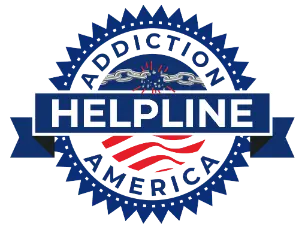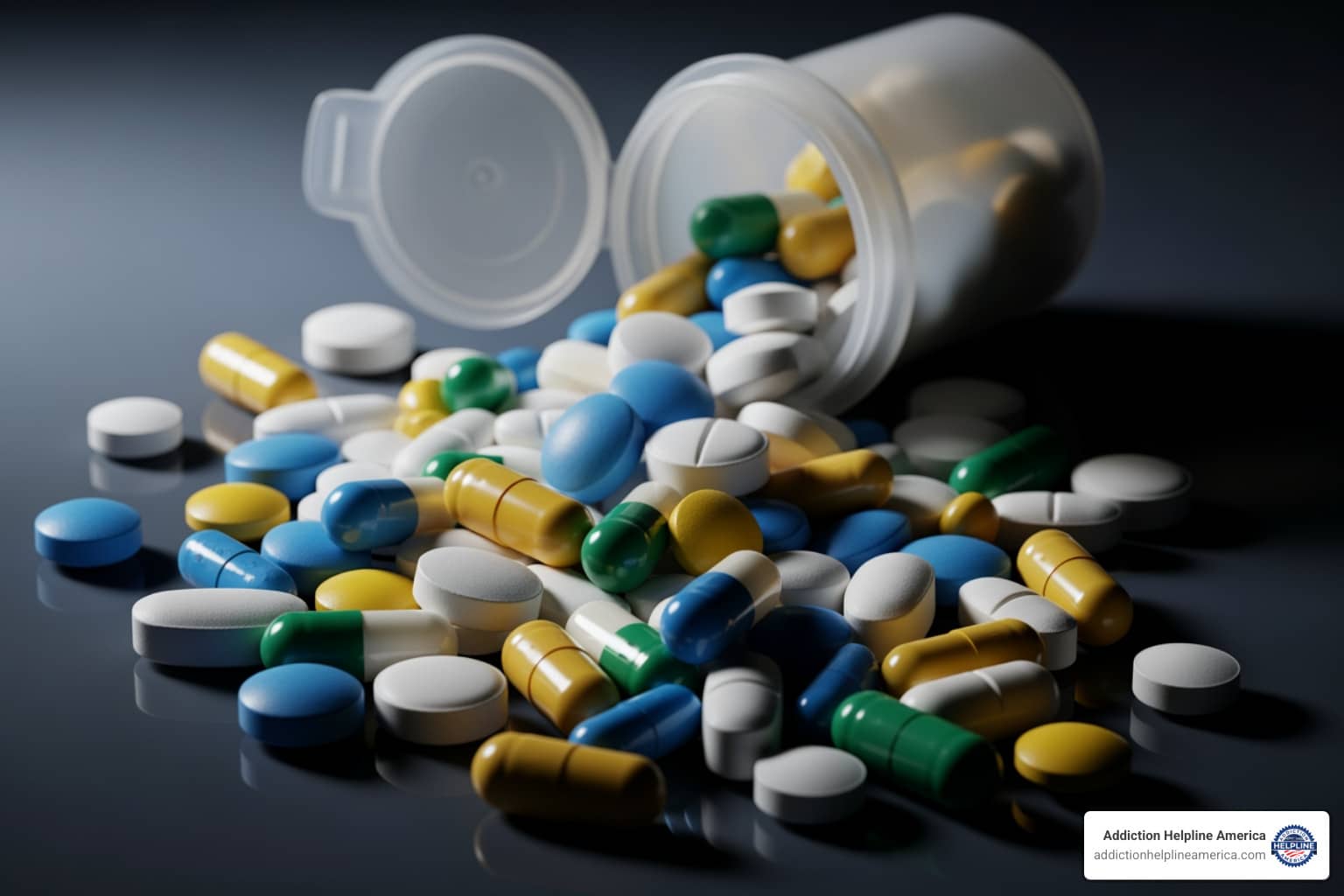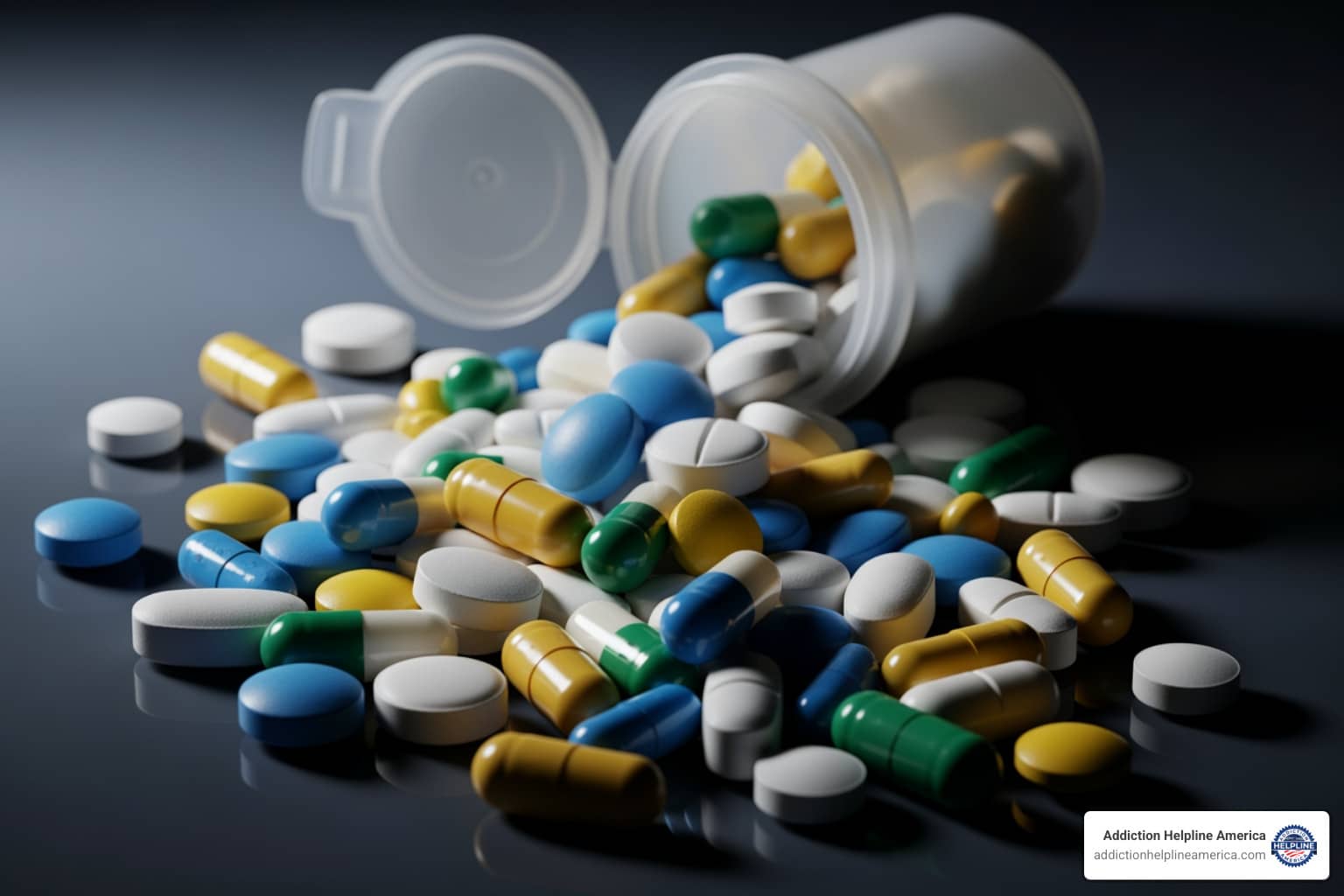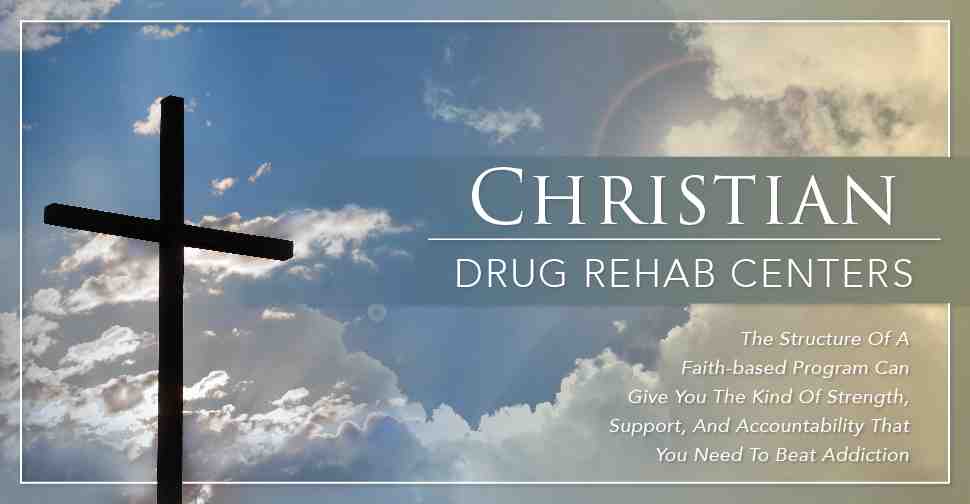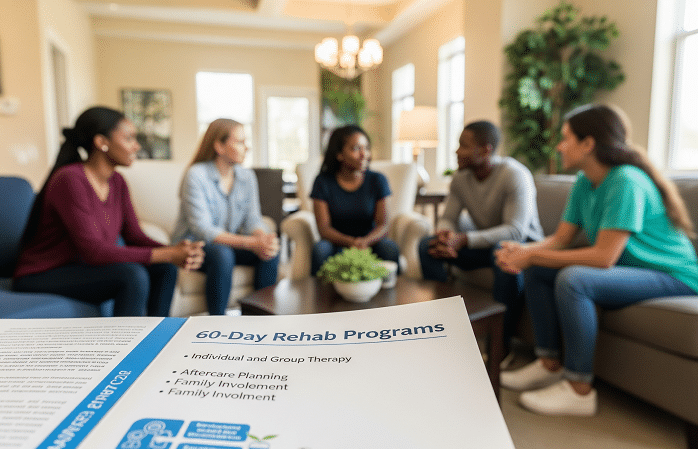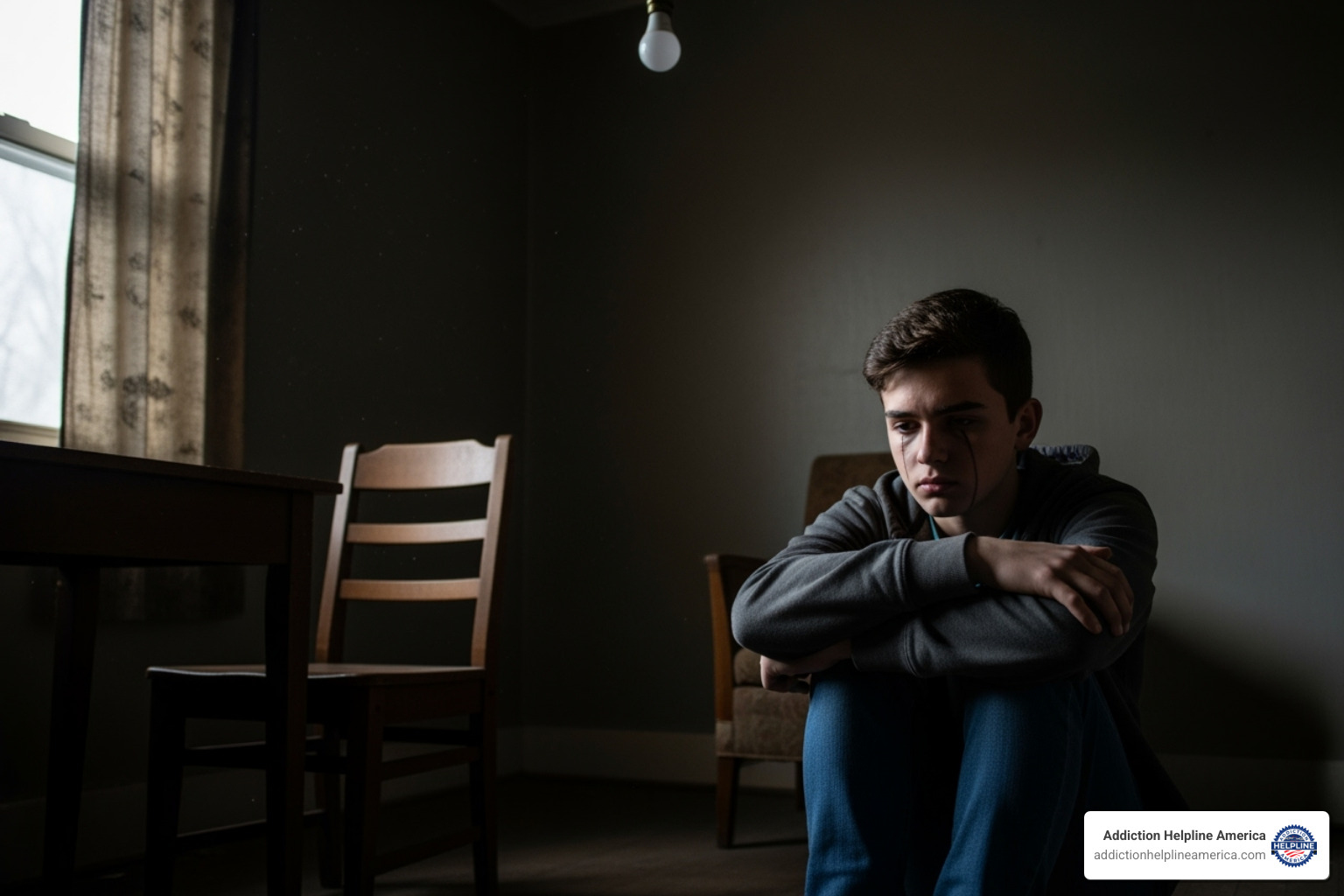
The Hidden Reality Affecting Millions of American Families
Adolescent substance abuse affects nearly 10 million young people in the United States, yet most families remain unaware of the warning signs until it’s too late. The landscape has changed dramatically – while overall use rates have declined since the pandemic, the substances teens are using today are more dangerous than ever.
Key Facts About Adolescent Substance Use:
- 46% of 12th graders have tried alcohol in the past year
- 22.1% of seniors have experimented with e-cigarettes
- 18.4% of 12th graders are current cannabis users
- Nearly 90% of all teen alcohol consumption occurs during binge drinking episodes
- Overdose deaths among teens have risen dramatically due to fentanyl contamination
The teenage brain is still developing, making adolescents particularly vulnerable to addiction. The part of the brain responsible for impulse control doesn’t fully mature until the mid-20s, while reward-seeking behaviors peak during adolescence.
Why the stakes are higher now:
- High-potency cannabis with dangerous THC levels
- Illicit fentanyl contaminating street drugs
- Social media normalizing substance use
- Increased access to vaping products
Even occasional use puts teens at risk for accidents, poor academic performance, and developing lifelong addiction. For every year substance use is delayed, the risk of addiction drops by about 5%.
At Addiction Helpline America, we’ve helped thousands of families steer the complexities of adolescent substance abuse through our 24/7 helpline and comprehensive treatment referral services. Our experienced team understands that early intervention can make the difference between a temporary setback and a lifelong struggle.
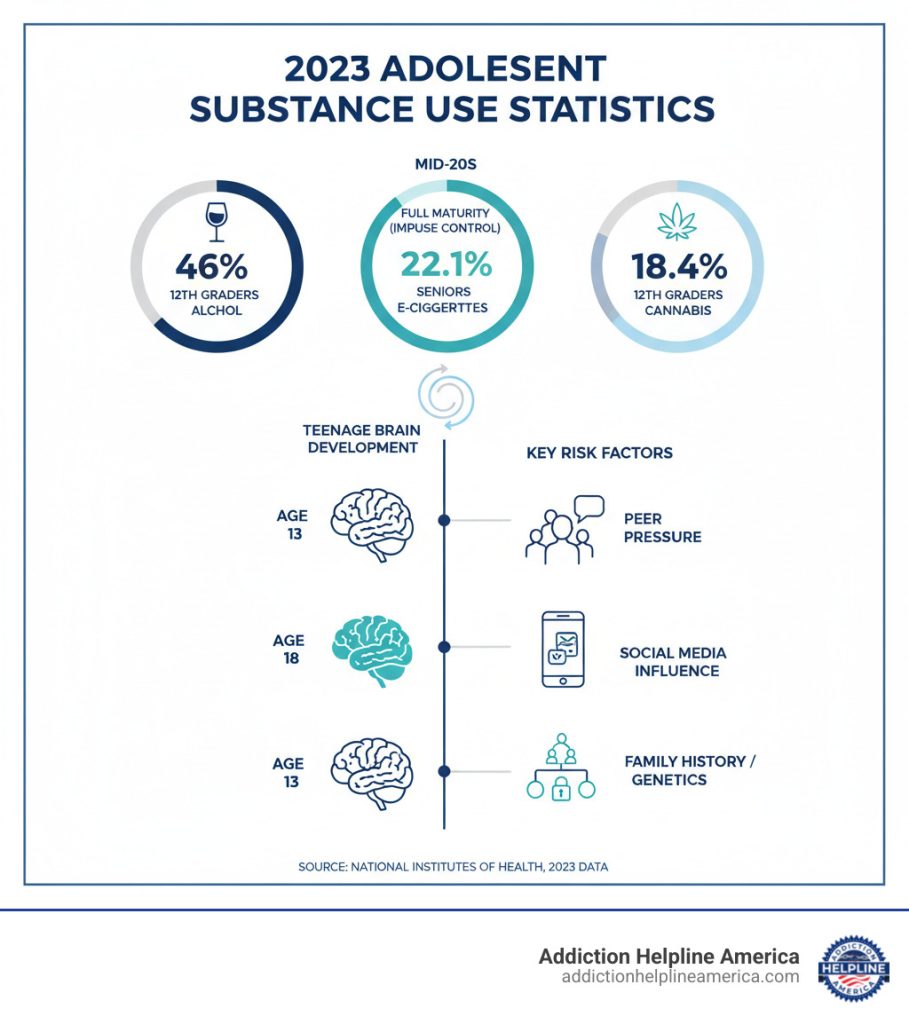
The Current Landscape of Teen Substance Use
Understanding today’s adolescent substance abuse landscape feels like trying to hit a moving target. Just when parents think they’ve figured out what to watch for, new substances and trends emerge that change everything.
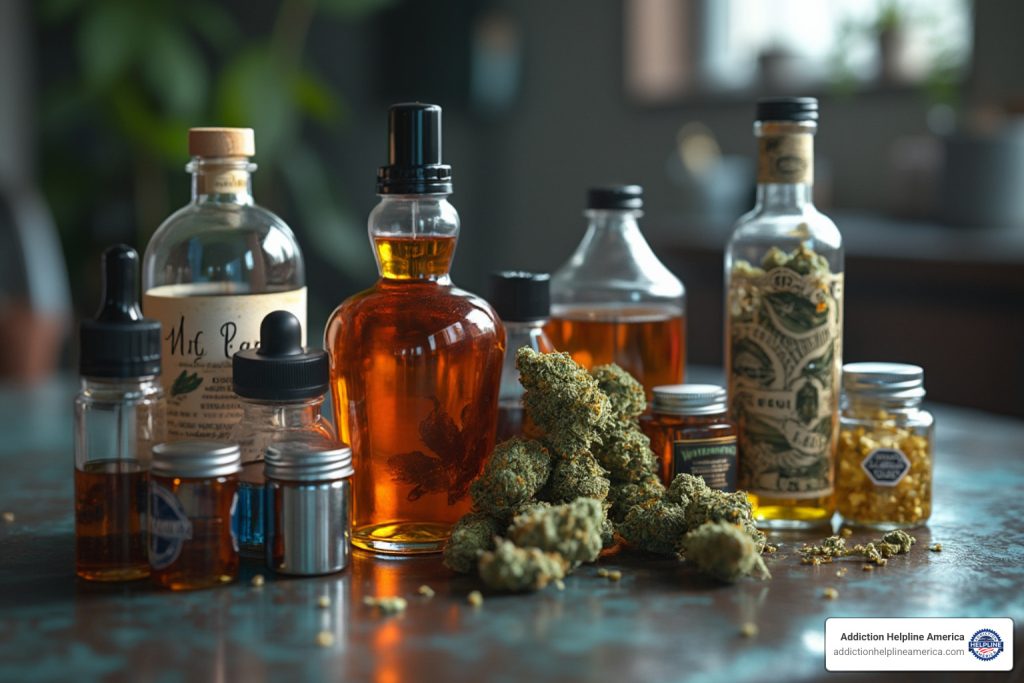
Here’s some encouraging news: the 2023 Monitoring the Future survey shows that overall teen drug use has stayed below pre-pandemic levels. Only 10.9% of eighth graders, 19.8% of 10th graders, and 31.2% of 12th graders reported using any illegal drugs in the past year.
But here’s the catch – while fewer teens might be experimenting, the ones who do use substances face much greater dangers than previous generations. It’s like the difference between jumping into a shallow pond versus diving into rapids.
The COVID-19 pandemic created a perfect storm of circumstances. Some teens had fewer opportunities to try drugs because they weren’t socializing as much. However, those already struggling with substance use or mental health issues sometimes turned to heavier use as a way to cope with isolation and stress.
The bottom line? Drug use isn’t necessarily becoming more common, but it’s definitely becoming more dangerous. You can dive deeper into these findings in the latest results from the Monitoring the Future survey.
Trends in Alcohol and Cannabis Use
Despite all the focus on newer substances, alcohol remains the most popular choice among teens. By senior year, 46% of students have tried alcohol in the past year, and 33% admit to being drunk during that same period.
Here’s what really worries experts: nearly 90% of all teen drinking happens as binge drinking. This isn’t teens having a sip of wine at dinner – this is consuming large amounts in short periods. About 10% of 12th graders drank more than 5 drinks in a row within two weeks of the survey.
This pattern is particularly dangerous because teens’ bodies process alcohol differently than adults. Their tolerance is lower, but their impulse control is also weaker, creating a recipe for accidents and poor decisions.
Cannabis use tells a similar story. 29% of 12th graders used cannabis in the past year, with 18.4% being regular users. What’s changed is how they’re using it – 19.6% of seniors are now vaping cannabis instead of smoking it traditionally.
A newcomer called Delta-8-THC appeared on the radar for the first time in 2023, with 11.4% of seniors trying it. This hemp-derived compound exists in a legal gray area and shows how quickly new substances can gain popularity among teens.
The Unique Risks of Vaping and E-Cigarettes
If there’s one thing that keeps addiction specialists up at night, it’s vaping. These sleek devices were originally marketed to adults as a “safer” alternative to cigarettes, but they’ve become incredibly appealing to teenagers.
22.1% of 12th graders have tried e-cigarettes, and 16.9% use them regularly. While nicotine vaping dropped slightly from 27.3% to 23.2% among seniors, these numbers are still alarmingly high.
Vaping devices are particularly sneaky because they can deliver extremely high doses of nicotine or THC without users realizing how much they’re consuming. It’s like the difference between sipping a beer and taking shots – the delivery method completely changes the impact.
The teenage brain is especially vulnerable to nicotine addiction. Once hooked, teens often find it incredibly difficult to quit, and many eventually move on to traditional cigarettes or other substances. We’re essentially watching a new generation develop nicotine addictions through a delivery system we don’t fully understand yet.
Other Commonly Used Substances
While alcohol, cannabis, and vaping grab most of the headlines, teens experiment with various other substances that parents should know about. Among 12th graders, 6.6% have tried hallucinogens and 6.3% have used inhalants – common household products that can cause instant death even on first use.
The numbers for harder drugs remain relatively low but concerning: 1.3% have tried cocaine, 0.6% have used methamphetamines, and 0.2% have experimented with heroin. Even these small percentages represent thousands of young people putting themselves at extreme risk.
Prescription drug misuse deserves special attention. 1% of seniors misused prescription narcotics like Vicodin or OxyContin in the past year. These medications, often found in family medicine cabinets, can be just as dangerous as street drugs – especially with today’s fentanyl contamination risks.
At Addiction Helpline America, we’ve seen how quickly experimentation can spiral into serious adolescent substance abuse. Our counselors understand that every percentage point in these surveys represents real families facing difficult situations, and we’re here to help steer these challenges with compassion and expertise.
Why Teens Use Substances and the Consequences
When we see a teenager making dangerous choices with substances, it’s natural to wonder “why?” The answer isn’t as simple as poor judgment or rebellion. Adolescent substance abuse stems from a fascinating yet concerning mix of brain development, social pressures, and life circumstances that create a perfect storm during these crucial years.
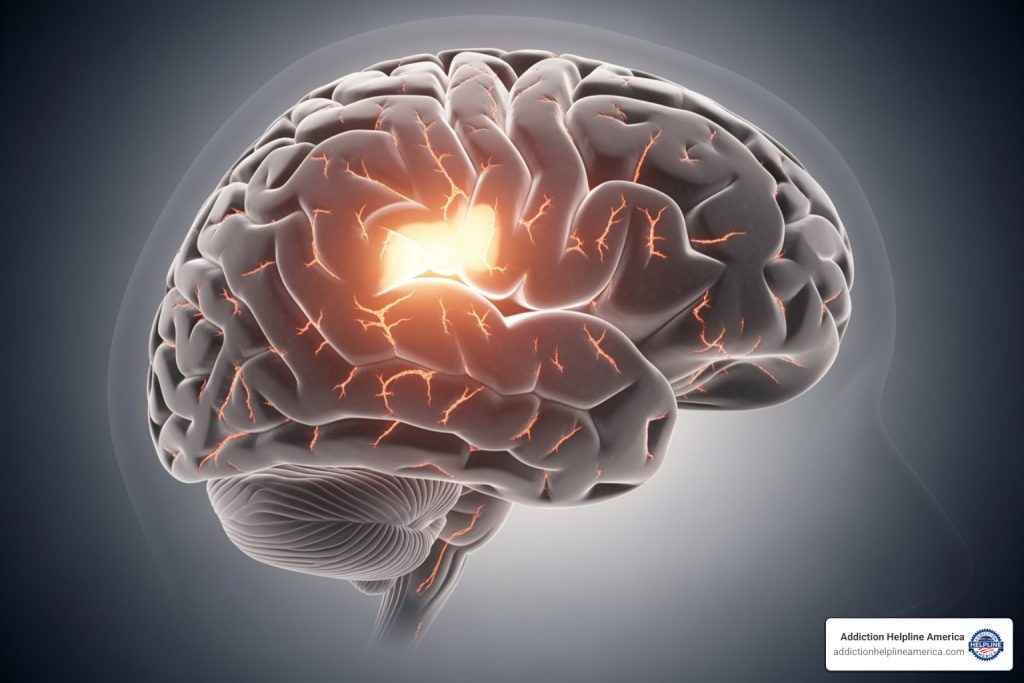
Think of the teenage brain as a car with a powerful engine but underdeveloped brakes. The limbic system – the brain’s reward center that craves excitement and new experiences – is fully revved up during adolescence. Meanwhile, the prefrontal cortex, which handles decision-making and impulse control, won’t finish developing until the mid-twenties. This biological reality means teens are literally wired to seek thrills before they can fully grasp the consequences.
Peer pressure remains one of the strongest influences, though it’s evolved beyond the stereotypical “cool kid” offering drugs. Today’s teens face constant exposure through social media, where influencers glamorize vaping and substance use reaches them 24/7. The desire to fit in, appear mature, or simply satisfy curiosity can override their still-developing judgment.
Many adolescents turn to substances as a coping mechanism. Academic pressure, family conflict, anxiety, depression, or trauma can feel overwhel
ming when you don’t yet have adult-level emotional regulation skills. Substances offer temporary relief from these intense feelings, creating a dangerous pattern of self-medication.
Short-Term and Long-Term Risks
The consequences of adolescent substance abuse ripple through every aspect of a teen’s life, often in ways families don’t immediately recognize. In the immediate term, substance use clouds judgment and increases risky behaviors. Teens under the influence are more likely to get into car accidents, engage in unsafe sexual activity, or find themselves in dangerous situations they’d normally avoid.
Academic performance typically suffers first. Parents might notice dropping grades, missed assignments, or increased absences before other warning signs appear. The developing brain struggles to form and retrieve memories when regularly exposed to substances, making learning significantly harder.
The long-term risks are even more serious because the teenage brain is still building crucial neural pathways. Regular substance use during this critical period can permanently alter brain development, affecting memory, attention, and decision-making abilities well into adulthood. Research shows that more than 90% of adults with substance use disorders began using during their teenage years.
Mental health complications often emerge or worsen with substance use. Depression, anxiety, and in some cases psychosis – particularly with high-potency cannabis – can develop or intensify. The relationship between mental health and substance use creates a vicious cycle that becomes increasingly difficult to break without professional help.
The Growing Danger of High-Potency Substances
Here’s what keeps addiction specialists up at night: while fewer teens might be trying drugs overall, the substances available today are exponentially more dangerous than what previous generations encountered. Modern cannabis contains THC levels that would have been unimaginable decades ago, dramatically increasing the risk of addiction and mental health complications.
The most alarming development is the widespread contamination of street drugs with illicit fentanyl. This synthetic opioid is so potent that even microscopic amounts can be fatal. Teens buying what they think are prescription pills or other drugs often unknowingly consume fentanyl, leading to dramatic rise in overdose deaths among adolescents.
This reality has transformed the conversation around teen drug use. Parents can no longer think in terms of “experimenting” or “trying things” – today’s substances can be deadly on first use. Overdose prevention strategies, including naloxone access and education about recognizing overdose symptoms, have become essential knowledge for all families.
The Role of Parental Attitudes and Behaviors
Parents wield more influence over their teen’s substance use decisions than they might realize, even when it feels like their teenager isn’t listening. Research consistently shows that family dynamics and parental attitudes are among the strongest predictors of adolescent substance use patterns.
Teens whose parents model healthy coping strategies and maintain open communication about substance use risks are significantly less likely to develop problems. However, parents who use substances heavily themselves, express permissive attitudes about teen experimentation, or fail to set clear expectations inadvertently increase their child’s risk.
The most protective approach combines warmth with clear boundaries. Teens need to know their parents care about them while also understanding that substance use isn’t acceptable. Regular conversations about the real dangers – not scare tactics, but honest discussions about today’s risks – help teens make informed decisions when faced with peer pressure.
Family-based prevention programs have shown remarkable success because they recognize that adolescent substance abuse rarely happens in isolation. When families improve communication patterns and create supportive home environments, teens develop the emotional skills and confidence they need to steer these challenging years safely.
At Addiction Helpline America, we’ve seen how early family intervention can completely change a teenager’s trajectory. Our counselors understand that behind every concerned parent call is a family looking for hope and practical solutions during one of their most frightening moments.
Recognizing the Signs and Getting a Diagnosis
Every parent knows their child better than anyone else. That gut feeling when something isn’t quite right? Trust it. While teenage behavior can be unpredictable on the best of days, adolescent substance abuse often creates patterns that go beyond typical teenage moodiness.

The challenge is that many warning signs can look like normal teenage behavior at first glance. Your once-chatty teen might become secretive, or their grades might slip during a particularly stressful semester. The key is watching for clusters of changes that happen together, or changes that are particularly severe and don’t seem to improve over time.
Signs and Symptoms of a Problem
When substance use becomes a problem, it typically shows up in three main ways: how your teen behaves, how they look physically, and changes in their emotional state.
Behavioral red flags often appear first. You might notice your teenager becoming increasingly secretive or defensive when you ask simple questions about their day. They may suddenly have an entirely new friend group while being vague about who these new friends are. Lying becomes more frequent, and you might find money or valuables missing from around the house.
School performance often takes a hit. Declining grades, skipping classes, or losing interest in academics can signal trouble. Activities they once loved – whether it’s soccer, band, or art – suddenly don’t matter anymore. Sleep patterns shift dramatically, with teens either staying awake all night or sleeping through most of the day.
Mood swings become more intense and unpredictable. While all teenagers experience emotional ups and downs, substance use can create extreme irritability, unexplained aggression, or sudden anxiety that seems to come out of nowhere.
Physical changes can be subtle but telling. Poor hygiene or neglecting their appearance might be early signs, especially if your teen was previously particular about how they looked. Bloodshot eyes or pupils that seem unusually large or small can indicate recent use. Some substances cause frequent nosebleeds, while others might leave unusual smells on their breath or clothing.
Weight changes happen too – some substances suppress appetite leading to rapid weight loss, while others increase cravings. Tremors, fidgeting, or shaking hands can indicate withdrawal or intoxication
The psychological impact shows up as persistent sadness that doesn’t lift, increased anxiety or panic attacks, or a general lack of motivation that affects everything they do. Memory problems and confusion during conversations can also be warning signs.
One or two of these signs don’t automatically mean substance use. Teenagers face genuine stress from school, relationships, and growing up. But when several signs appear together or persist despite your support, it’s time to seek professional help.
How Adolescent Substance Abuse is Diagnosed
If your instincts are telling you something’s wrong, start with your child’s doctor. Pediatricians are trained to spot the signs of substance use and can provide a safe, confidential space for honest conversations.
Many medical organizations recommend routine screening for substance use during annual check-ups, even for teens who seem to be doing fine. This isn’t because doctors assume all teenagers use substances – it’s because early detection makes treatment so much more effective.
Healthcare providers use specialized screening tools designed specifically for adolescents. The CRAFFT screening tool is particularly effective, asking questions about riding in cars with someone who’s been drinking, using substances to relax, using alone, forgetting things while using, having family or friends tell them to cut down, and getting into trouble while using.
Confidentiality is crucial during these conversations. Teenagers are much more likely to be honest about their substance use when they know their privacy will be protected. This creates trust between your teen and their healthcare provider, which can be invaluable for ongoing support.
Drug testing might seem like an obvious diagnostic tool, but it has significant limitations. Tests can produce false positives or miss recent use entirely, depending on the substance and timing. More importantly, a positive test doesn’t tell the whole story – it can’t distinguish between a one-time experiment and regular use that’s becoming a problem.
A proper diagnosis requires much more than a test result. Healthcare providers look at the complete picture: screening results, conversations with your teen, behavioral observations, family history, and how substance use might be affecting their daily life.
For a formal diagnosis of Substance Use Disorder, doctors use criteria from the DSM-5, which looks at 11 different behaviors and symptoms across four main areas: social problems, loss of control, risky behaviors, and physical changes. The severity depends on how many criteria are met – mild (2-3 criteria), moderate (4-5 criteria), or severe (6 or more criteria)
The important thing to remember is that getting a professional assessment isn’t about punishment or judgment. It’s about getting your teenager the right help at the right time. Early intervention can make all the difference between a temporary struggle and a lifelong battle with addiction.
At Addiction Helpline America, we understand how overwhelming this process can feel for families. Our confidential helpline connects you with experienced professionals who can guide you through finding the right assessment and treatment options for your teen.
Effective Prevention and Treatment for Adolescent Substance Abuse
When you find your teen is struggling with substance use, the world can feel like it’s crashing down. But here’s what we want you to know: recovery is absolutely possible, and there are proven treatments that work specifically for young people.

The key is finding treatment designed for teenagers. Adult programs don’t work the same way because teens’ brains are still developing and they face unique social pressures. Adolescent substance abuse treatment requires specialized care from therapists who understand these differences.
At Addiction Helpline America, we’ve seen thousands of families steer this journey successfully. We connect you with treatment centers that specialize in helping teens, not just adults. For additional resources and information, NIDA’s website offers valuable guidance for both parents and teens.
Evidence-Based Treatment Approaches
Effective treatment for adolescent substance abuse isn’t one-size-fits-all. The best programs combine several proven approaches, custom to your teen’s specific needs and circumstances.
Behavioral therapies form the backbone of successful treatment. Cognitive Behavioral Therapy (CBT) helps teens recognize thought patterns that lead to substance use and develop healthier responses. The Adolescent Community Reinforcement Approach (A-CRA) builds new social skills and healthy activities. For intense emotions, Dialectical Behavioral Therapy (DBT) teaches practical skills for managing feelings without turning to substances.
Family involvement is crucial for lasting recovery. Multidimensional Family Therapy (MDFT) addresses the teen’s behavior along with family dynamics and peer influences. Family Behavioral Therapy (FBT) gives parents concrete strategies to support their child’s sobriety at home.
Motivational Interviewing is a gentle counseling approach that helps ambivalent teens explore their own reasons for wanting to change, rather than being lectured.
Since many teens with substance problems also have mental health issues like anxiety or depression, integrated treatment addresses both conditions simultaneously, which is crucial for lasting recovery.
Medication plays a limited but important role. Buprenorphine can be prescribed for teens 16 and older with opioid addiction. Researchers are also studying N-acetylcysteine for cannabis and alcohol problems, though more research is needed.
Support groups like Narcotics Anonymous (NA) and Alcoholics Anonymous (AA) provide peer support and ongoing accountability. Many teens benefit from connecting with others who understand their struggles.
Recovery takes time. Most effective treatment programs last at least three months, with ongoing support crucial for maintaining sobriety long-term.
Comparing Prevention Interventions
Different prevention approaches work in different settings. Understanding what’s most effective helps families and communities make smart choices about prevention.
School-based programs have proven particularly effective for tobacco prevention. For alcohol, school interventions work best when they include personalized feedback and brief interventions. Drug prevention in schools succeeds when programs focus on social competence and social influence—teaching kids to resist peer pressure and build confidence. Effective programs combine information with refusal and self-management skills.
Family-based interventions create lasting change by improving family function. Programs that strengthen family relationships and actively involve parents in developing new skills are most successful for preventing alcohol, drug, and tobacco use.
Digital interventions show promise but need more development. Computer-delivered programs help college students reduce drinking, and web-based social norms interventions challenge misconceptions about how much peers actually use substances. Mobile phone text messaging shows potential for smoking cessation, though more research is needed.
The clear winner? Multi-level approaches that combine school and family components consistently show the strongest results.
Strategies for Overdose Prevention
With fentanyl contaminating street drugs at unprecedented levels, overdose prevention has become a life-or-death priority for families dealing with adolescent substance abuse.
Naloxone education and access can literally save your teen’s life. This medication rapidly reverses opioid overdoses and is now available over-the-counter in nasal spray form. It’s safe, easy to use, and every family should know how to administer it. Schools, communities, and families need to make naloxone as common as fire extinguishers.
Fentanyl test strips detect whether street drugs contain this deadly substance. While not perfect, they give users crucial information that can prevent accidental overdoses. Many harm reduction organizations provide these strips for free.
Modern harm reduction education moves beyond “just say no” to “just say know.” This means having honest conversations about the extreme dangers of illicitly manufactured pills that look like prescription medications but contain deadly fentanyl. It means teaching teens never to use substances alone and always having someone nearby who can call for help.
Recognizing overdose symptoms is critical knowledge for everyone. Watch for slow or shallow breathing, blue lips or fingertips, tiny pinpoint pupils, unresponsiveness to loud noises or pain, gurgling sounds, and a limp body. If you see these signs, call 911 immediately and administer naloxone if available.
The harsh reality is that today’s street drugs are more dangerous than ever before. But with the right knowledge, tools, and quick action, overdoses can be reversed and lives can be saved.
Conclusion: Taking the Next Step to Protect Your Teen
As a parent, finding the hidden world of adolescent substance abuse can feel overwhelming. The statistics are sobering – nearly 10 million young Americans are affected, and the substances available today pose dangers our generation never faced. Yet there’s hope in the knowledge that early intervention can change everything.
Throughout this guide, we’ve uncovered the complex reality facing today’s teens. The developing adolescent brain, with its reward system maturing faster than impulse control, creates a perfect storm of vulnerability. Modern substances carry unprecedented risks – from high-potency cannabis to the deadly threat of fentanyl contamination that’s turning experimental drug use into a potential death sentence.
The warning signs often hide in plain sight. Changes in behavior, declining grades, new friend groups, and shifts in mood can all signal a problem. But here’s what gives us hope: families who recognize these signs early and take action see dramatically better outcomes.
Evidence-based treatment works. Behavioral therapies like CBT, family-based approaches such as Multidimensional Family Therapy, and motivational interviewing have helped countless teens reclaim their futures. The key is finding age-appropriate care from professionals who understand adolescent development.
Prevention strategies also show real promise. School-based programs that build social skills, family interventions that strengthen communication, and even digital tools are making a difference. When families combine clear boundaries with open, honest conversations about substance use, teens are far more likely to make safer choices.
But perhaps most importantly – you’re not alone in this fight. At Addiction Helpline America, we’ve walked alongside thousands of families facing these same fears and challenges. Our experienced team understands that every teen’s situation is unique, and we’re committed to helping you find the right path forward.
Time matters. Every day that substance use continues increases the risk of lasting consequences. But every day also brings new opportunities for connection, intervention, and healing. The teenage years that make adolescents vulnerable to addiction also make them remarkably responsive to the right support and treatment.
Don’t let fear or shame keep you from taking action. Our confidential helpline is available 24/7 to provide personalized guidance from our vast network of treatment options. Whether you’re seeing early warning signs or dealing with an established problem, we’re here to help you steer toward hope and recovery.
Your teen’s future is worth fighting for. Find personalized addiction treatment options for your teen and take the first step toward protecting what matters most.
Our helpline is 100%
free & confidential
If you or someone you care about is struggling with drug or alcohol addiction, we can help you explore your recovery options. Don’t face this challenge alone—seek support from us.
Programs
Resources
Will my insurance
cover addiction
treatment?
We're ready to help
Find the best
drug or alcohol treatment
center
Are you or a loved one struggling with addiction? Call today to speak to a treatment expert.
